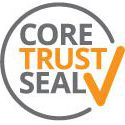- Submit data
- Submission guidelines
- Water sample data
Water sample data submission
BODC aims to ensure that all data incorporated into our database are adequately documented to allow long term viability and future access. Therefore, key data set information (metadata) are important for each data set we receive.
Information specific to water sample data are described below. Metadata should be supplied in our metadata submission template, however we are able to accept metadata in any format. Please do not be discouraged from sending us data even if some of the information is unavailable. We fully understand that there are many reasons why the standards specified may not be completely achieved.
Discrete water sample data are considered to be any data that result from a single collection of water. Such data could originate from a single bottle attached to a rosette or drawn from a non-toxic supply.
Instructions for general data submissions and other data types are also available.
Data standard
Ideally, all data from a single source should be stored in a single file. However, it is not uncommon for a sample to undergo multiple analyses by different groups or laboratories and consequently be submitted separately. Therefore, it is crucial that the data be fully documented by date, time, position and sample identifier to enable us to merge data from a single source.
Data should be checked for quality and pre-edited or flagged for erroneous values.
Metadata specific to water sample data
Collection details
- Ship and cruise identifier.
- Project (if applicable).
- CTD station identifier (if appropriate).
- Sample identifier (i.e. bottle number, rosette position or firing sequence).
- Date/time of the measurement.
- Position and method of position fix (i.e. DGPS, GPS).
- Water column depth (if applicable) — include method — i.e. sounding and methodology, chart.
- Depth of sample (if applicable).
Instrument details
- Instrument description, reference number, manufacturer and model, sampling rate (as appropriate) — provide a literature reference, web site reference or briefly describe.
Analysis
- A description of or reference to full laboratory methods and procedures.
- Details of any external sample analysis, including the laboratory name and accreditation level.
- A description of or reference to any internal or external quality assurance procedures.
Data sampling/processing
- Editing and quality control methods.
- Identification of trace values (i.e. values below the detection limit).
- Handling of missing values (null versus zero, or 'blanks').
- Equations used for computed values.
- Precision of methods (i.e. number of significant figures).
- Quality control report.
Units per volume and per mass
Reporting and long-term storage units should follow the international standards and be as close to the measurement unit as possible. While units per litre should be the choice for the concentration of an element in a liquid, a large part of the oceanographic community recommends and requires concentrations of a substance in sea water to be expressed in units per kilogram. The conversion from units per mass to units per volume is subject to inaccuracies due to the fact that essential metadata measurements required for the conversion are rarely reported.
In line with recommendations from the First International Oceanographic Data and Information Exchange (IODE) Workshop on Quality Control of Chemical Oceanographic Data Collections, IOC Project Office for IODE, Oostende, Belgium, 8-11 February 2010, Paris, UNESCO, 25 March 2010 (Intergovernmental Oceanographic Commission (IOC) Workshop Report No. 228), BODC asks that its data providers follow the following guidelines
- if submitting data in units per mass, originators supply sufficient information to enable future conversion from per mass to per volume units (and vice versa) to be done accurately. At a minimum this requires the density conversion factor, the equation of state and the temperature used in the calculation of the density
- if submitting data in units per volume, originators should also supply the temperature of a sample fixation if measured (e.g. for dissolved oxygen concentrations) or the temperature of the analysed sample (e.g. for nutrients samples allowed to equilibrate prior to analysis this would be laboratory temperature), and in situ salinity if not already held at the data centre.


